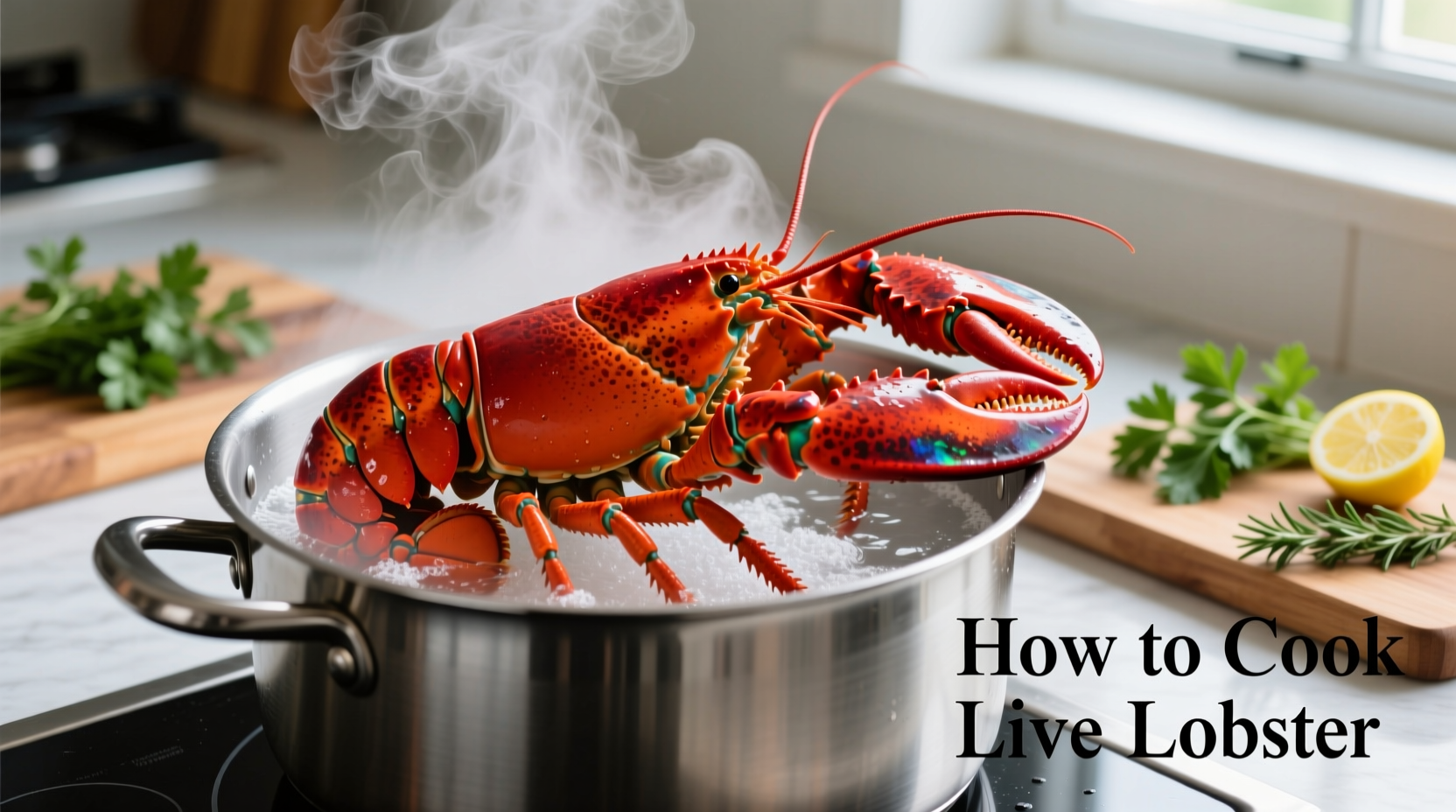Preparing live lobster properly transforms this ocean treasure into a culinary masterpiece. As a chef with extensive experience handling crustaceans, I've refined techniques that balance ethical considerations with exceptional flavor. This guide walks you through every critical step, from selecting your lobster to serving that perfect claw.
Understanding Lobster Ethics and Safety
Before handling live lobster, acknowledge the ethical considerations. Research from the UK Department for Environment, Food & Rural Affairs indicates that crustaceans likely experience pain, making humane treatment essential. The most widely accepted method involves rapid temperature change to minimize suffering.
Always wear thick gloves when handling live lobsters—their claws can exert 100 pounds per square inch of pressure. Keep lobsters cold (32-40°F) but not frozen before cooking, as this slows their metabolism without causing unnecessary stress.
Selecting Your Live Lobster
Choose active lobsters that move their claws and antennae vigorously. Avoid specimens with sluggish movement or ammonia-like odors. For optimal meat-to-shell ratio, select 1½-2 lb (680-900g) lobsters—larger ones often have tougher meat. The FDA Seafood Guide recommends checking for:
- Dark greenish-brown shell (indicates freshness)
- Firm, heavy feel for its size
- Intact claws with no missing segments
Step-by-Step Cooking Methods
Each cooking technique delivers distinct flavor profiles and textures. Your choice depends on available equipment and desired outcome.
| Cooking Method | Time (1½ lb) | Water Ratio | Best For |
|---|---|---|---|
| Boiling | 8-12 minutes | 1/4 cup salt per gallon | Traditional preparation, quick cooking |
| Steaming | 10-14 minutes | 1 inch water + aromatics | Preserving delicate flavor, tender meat |
| Grilling | 6-8 minutes per side | N/A (dry heat) | Smoky flavor, charred presentation |
Boiling Technique (Most Accessible Method)
Fill a large pot with enough water to cover lobsters, adding 1/4 cup salt per gallon. Bring to a vigorous boil. Grasp the lobster firmly behind the claws with tongs, plunge headfirst into the water, and cover immediately. Cooking time varies by weight:
- 1½ lb: 8-10 minutes
- 2 lb: 10-12 minutes
- Over 2 lb: 12-15 minutes
Lobster is done when the shell turns bright red and the meat reaches 140°F (60°C) internally. Remove immediately to prevent overcooking.
Steaming Method (Preserves Maximum Flavor)
Add 1 inch of water with aromatics (bay leaves, peppercorns) to a large pot. Place lobsters in a steamer basket above the water line. Cover and steam for 10-14 minutes until shells turn red. This gentler method yields slightly more tender meat than boiling.
Grilling Preparation (For Smoky Complexity)
Par-cook lobsters by boiling for 3 minutes, then split lengthwise. Brush with herb butter and grill meat-side down for 6-8 minutes. This hybrid approach prevents the lobster from curling excessively while adding delicious char.

Avoiding Common Mistakes
Many home cooks make these critical errors that compromise both ethics and quality:
- Using insufficient water - overcrowding causes uneven cooking
- Adding lobsters to cold water - prolongs suffering and toughens meat
- Overcooking - results in rubbery texture (lobster continues cooking after removal)
- Skipping the salt - essential for proper flavor development
The Monterey Bay Aquarium Seafood Watch emphasizes that proper cooking technique directly impacts both animal welfare and culinary results. Never microwave live lobsters—this causes unnecessary suffering and uneven cooking.
Serving and Enjoying Your Lobster
Immediately plunge cooked lobsters into an ice bath to stop the cooking process. Serve with drawn butter, lemon wedges, and crusty bread. For optimal flavor pairing, the American Culinary Federation recommends:
- Chilled Chardonnay or dry Rosé
- Simple green salad with light vinaigrette
- Garlic mashed potatoes
To extract meat, twist off claws and legs, crack with a lobster cracker, then remove the body meat in one piece after removing the sand vein.
Storage Guidelines
Never store live lobsters in fresh water or on ice—they require saltwater conditions. Keep in the refrigerator with damp seaweed or newspaper for up to 24 hours. Cooked lobster keeps refrigerated for 2 days or frozen for 3 months. The USDA Food Safety and Inspection Service confirms that proper storage prevents bacterial growth in cooked seafood.











 浙公网安备
33010002000092号
浙公网安备
33010002000092号 浙B2-20120091-4
浙B2-20120091-4